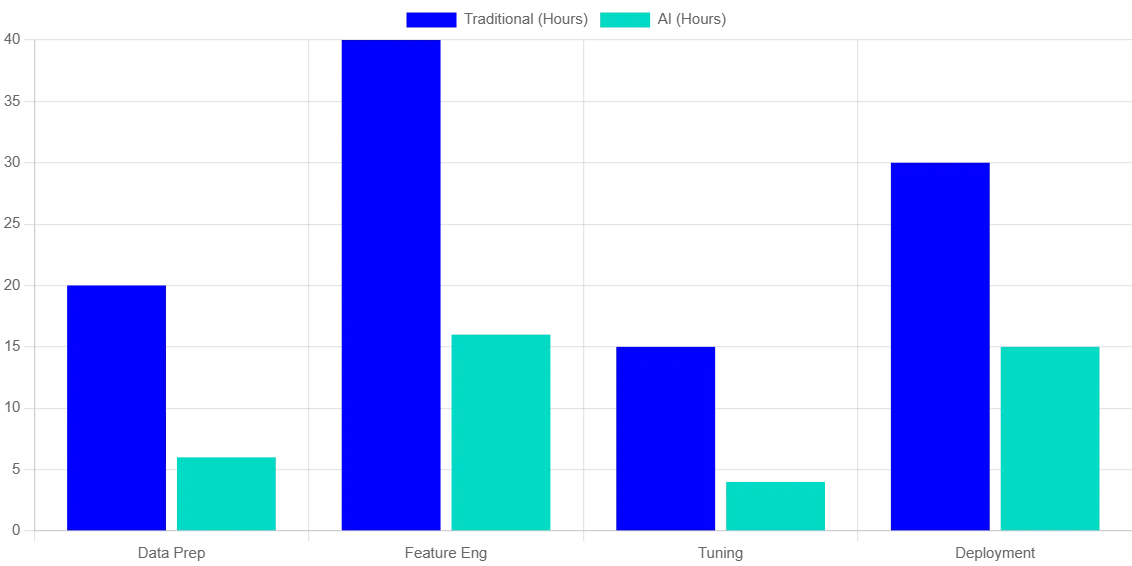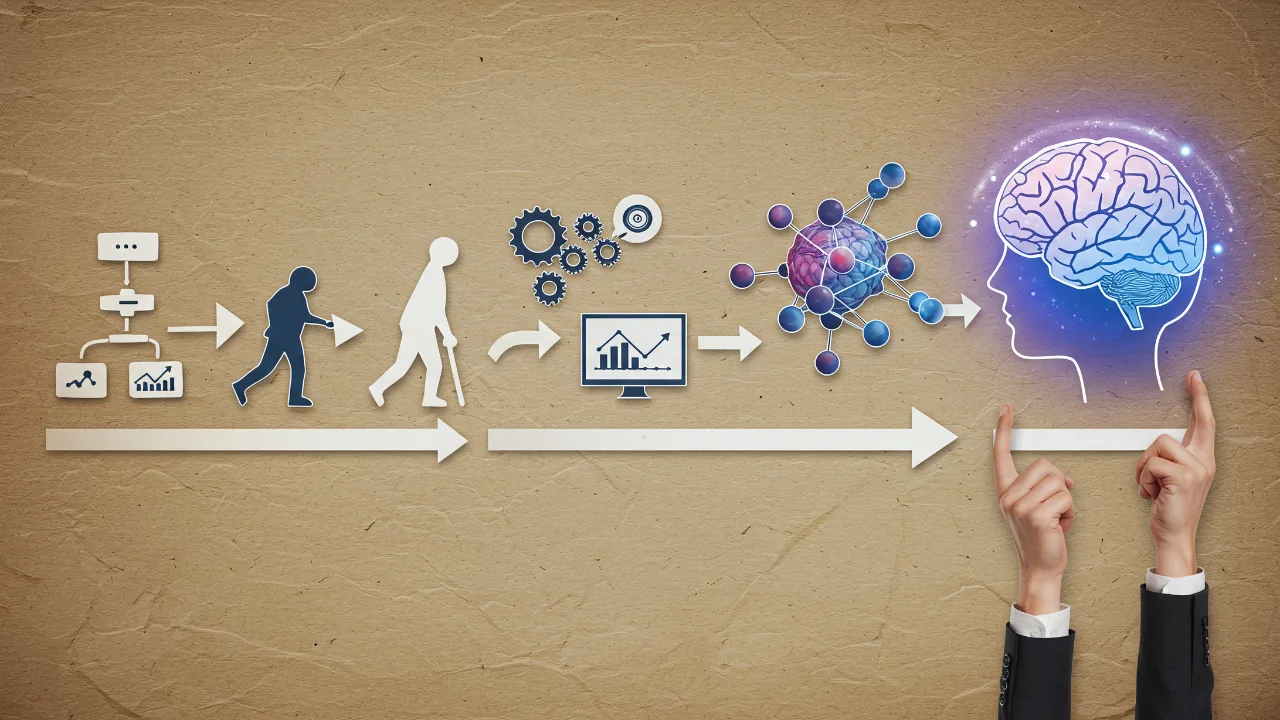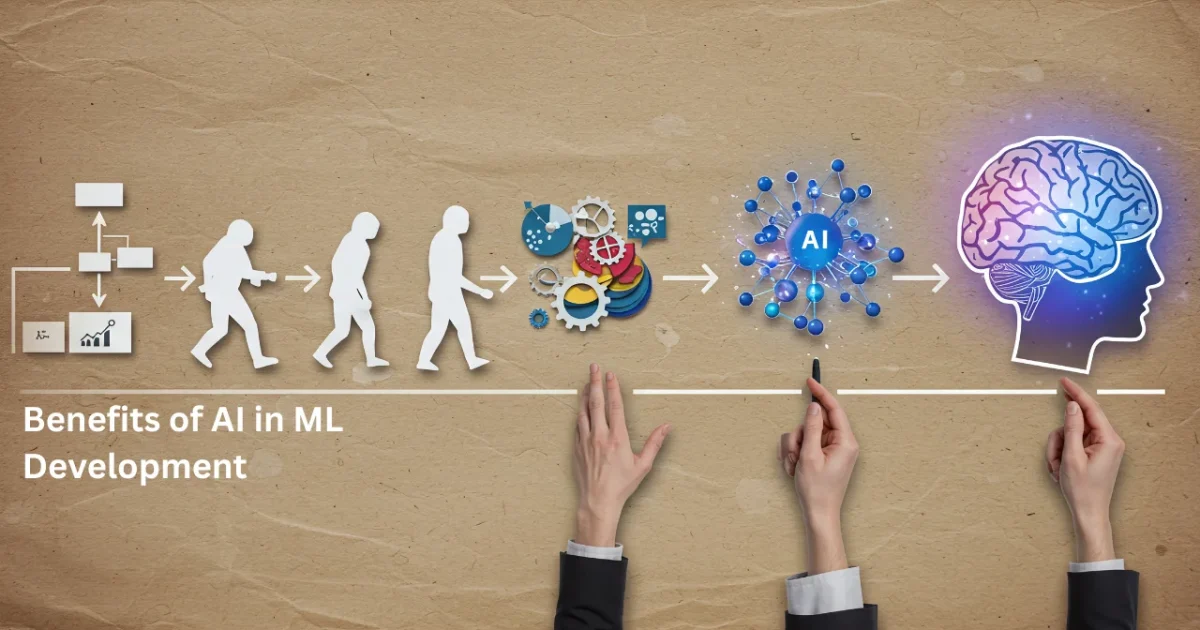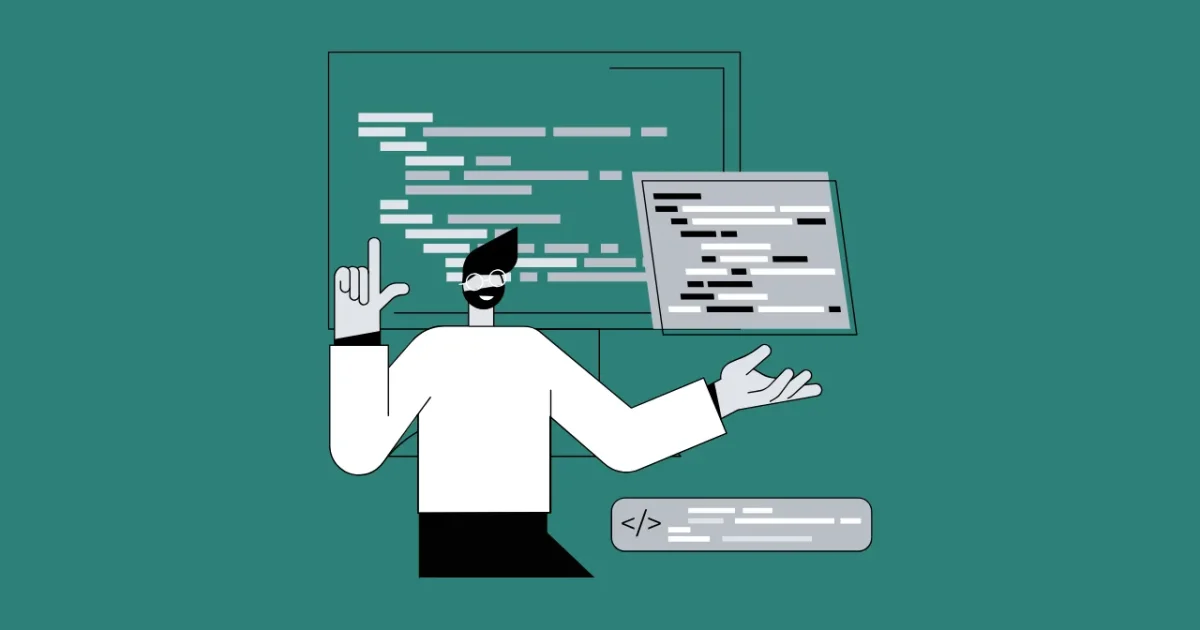Hey there, fellow data wizard. You’ve spent years crafting models by hand, tweaking every knob just right. But now AI tools pop up everywhere, promising to do it all faster. It feels like handing over the keys to your lab – scary, right? That black-box vibe leaves you wondering: Will it really help, or just add more headaches?
Unpacking AI vs Traditional ML Development: Like a Solo Chef vs. a Smart Kitchen
Think of traditional ML development as cooking a gourmet meal from scratch. You pick ingredients, chop veggies, and stir the pot – full control, but it takes hours. AI vs traditional ML development flips that: It’s like a smart kitchen robot that preps most steps, so you focus on the flavor.
In 2025, AI tools like AutoML platforms (think Google Cloud AutoML or H2O.ai) handle the grunt work. This AI ML comparison shows automated ML cuts build time by up to 80% for routine tasks. But here’s the deal: AI shines in speed, yet humans nail the creative twists.
“Generative AI makes the traditional machine learning workflow more efficient, all the way from data procurement to data cleaning.” – MIT Sloan experts on 2025 trends.
Side-by-Side: Task Breakdown in AI vs Traditional ML Development
Let’s get hands-on. Below is a fresh comparison table for key workflows. It spotlights manual data science processes versus AI methods, with rough 2025 time estimates based on industry benchmarks. This helps you see where AI boosts efficiency without the fluff.
| Task | Traditional Method | AI Method (e.g., AutoML Tools) | Time Savings Estimate |
|---|---|---|---|
| Data Preparation | Manual cleaning, handling missing values with scripts | Auto-detects anomalies, imputes data via algorithms | 70% (hours to minutes) |
| Feature Engineering | Hand-pick variables, engineer new ones based on domain knowledge | Automated selection and creation using genetic algorithms | 60% (days to hours) |
| Model Selection | Test multiple algorithms manually (e.g., Random Forest vs. SVM) | Scans and ranks 50+ models in one run | 80% (weeks to days) |
| Hyperparameter Tuning | Grid search or random trials in loops | Bayesian optimization or neural architecture search | 75% (hours to seconds per iteration) |
| Model Deployment | Custom scripts for MLOps pipelines | One-click integration with smart MLOps like Kubeflow | 50% (setup from weeks to days) |
This table? It’s your roadmap to spot quick wins. For example, in feature engineering, traditional methods rely on your gut – solid, but slow. AI tests thousands of combos fast, like a tireless intern.
Why Automated ML Wins on Efficiency – But Don’t Ditch the Human Touch
Benefits of automated ML hit hard in 2025. It slashes errors in repetitive steps, scales for big data, and frees you for big-picture strategy. Imagine building a fraud detection model: Manual data science processes might take weeks of scrubbing transactions. AI? It flags patterns overnight.
Yet, human vs machine in data science isn’t a knockout. AI struggles with nuanced contexts, like ethical biases in healthcare data. That’s where you step in – interpreting results like a detective reading clues.
“AutoML gives similar power to data scientists, delivering more time to engineer predictive features.” – Oracle AI experts.
The Black-Box Blues: Limits of Efficiency of AI in Model Building
You’re skeptical – fair. AI’s “magic” can hide flaws, like overfitting you can’t spot. In smart MLOps vs traditional methods, AI deploys faster, but debugging? That’s manual territory.
Take hyperparameter tuning: Here’s a quick code peek. Traditional way in Python (using scikit-learn):
from sklearn.model_selection import GridSearchCV
from sklearn.ensemble import RandomForestClassifier
param_grid = {'n_estimators': [50, 100], 'max_depth': [10, 20]}
grid_search = GridSearchCV(RandomForestClassifier(), param_grid, cv=5)
grid_search.fit(X_train, y_train) # Runs for hours on big data
best_model = grid_search.best_estimator_
Now, AI twist with H2O AutoML (super simple):
import h2o
from h2o.automl import H2OAutoML
h2o.init()
train = h2o.import_file("your_data.csv")
aml = H2OAutoML(max_models=20, seed=1)
aml.train(x=features, y=target, training_frame=train) # Tunes 20 models in minutes
best_model = aml.leader
See? AI handles the grind. But you still pick the final model based on business needs.

Data pulled from 2025 benchmarks – AI halves your workload on average.
Hybrid Power: Augmented Intelligence as the Future of Data Science Jobs
Forget AI replacing you – 2025 says hybrid rules. Augmented intelligence pairs AI’s speed with your smarts for strategic wins. It handles manual data science processes, so you frame problems and spot insights.
Jobs? Booming. AI creates 1M+ roles by 2027, blending data science with AI engineering. Skeptical? Start small.
“AI is a mirror, reflecting not only our intellect, but our values and fears.” – Ravi Narayanan, VP Insights at Nisum, on ethical hybrid use.
Your Action Plan: 5 Questions for Data Scientists to Ask About Integrating AI
Ready to test? Use this guide to ease in without regret.
- Does this task repeat often? If yes, let AI automate – like data cleaning – to reclaim hours.
- Can I explain the AI’s choices? Demand interpretable tools (e.g., SHAP) to avoid black boxes.
- What’s my ROI? Track time saved vs. learning curve; aim for 2x speedup first month.
- How does it fit my ethics? Check for bias in outputs, especially in sensitive fields.
- What’s the hybrid exit ramp? Ensure you can override AI, keeping humans in the loop.
Wrapping Up: The Winning Edge in Human vs Machine in Data Science
So, what’s the bottom line? AI vs traditional ML development isn’t a battle – it’s a team-up. Embrace benefits of automated ML for efficiency, but lead with your expertise. In 2025, this hybrid path secures your future, turning skepticism into superpowers. Dive in; your next breakthrough awaits.
Is AI Replacing Data Science Jobs in 2025?
No – it evolves them. Demand for AI-savvy data scientists jumps 40% yearly. Focus on high-level strategy.
What’s the Best AutoML Tool for Beginners?
H2O.ai or DataRobot – free tiers, easy Python integration, and strong on explainability.
How Long to Learn AI ML Comparison Basics?
A weekend crash course, then hands-on projects. Start with Kaggle datasets.
Can Traditional Methods Beat AI in Complex Projects?
Yes, for custom domains like rare disease modeling – your intuition wins.
Future of Smart MLOps vs Traditional Methods?
Smart MLOps dominates for scale, but hybrids blend both for trust and speed.





